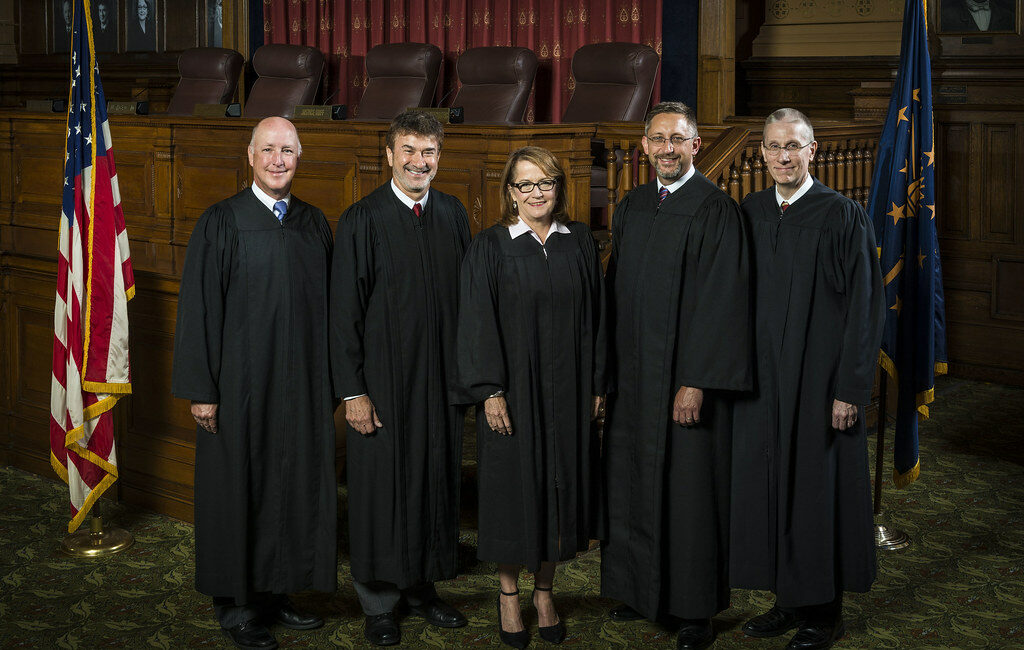The image of a judge clad in a black robe is a deeply ingrained symbol of justice and authority within the Western judicial system. Yet, few pause to consider the historical origins of this iconic attire. The robe’s history is intertwined with centuries-old traditions, societal shifts, and the personal preferences of those who uphold the rule of law.
England’s Influence on the Robe Tradition
The tradition of judges wearing robes traces back to England, specifically around the 14th century during the reign of Edward II (1327-1377). However, robes weren’t exclusive to judges; they had been a staple attire for academics for over a century, reminiscent of caps and gowns worn by graduates. These robes were also suitable attire for royal court visits, allowing judges to fit in seamlessly in various settings.
In the early days, judicial robes in England weren’t uniformly black. Judges donned violet robes in the summer, green in the winter, and reserved scarlet robes for special occasions. These robes were often a gift from the King. By 1635, however, guidelines emerged, recommending black robes with fur trim for winter and either violet or scarlet robes with pink taffeta for summer.
While the exact reasons remain a subject of historical debate, the shift towards black robes likely solidified in the latter half of the 17th century. The somber black hue is thought to be connected to the mourning periods following monarchs’ deaths, such as Queen Mary in 1694 or Charles II in 1685. By the mid-18th century, the black robe was standard for civil cases, while a scarlet robe adorned with a black scarf and hood was common for criminal cases.
Adopting and Adapting the Robe in America
The robe-wearing tradition was carried to the American colonies, where it became a point of contention post the American Revolution. Thomas Jefferson opined that American judges should distance from English traditions, advocating for just a suit in court. John Adams, on the other hand, felt that the robe—and wig, a staple of English judges—should persist. Ultimately, a middle ground was reached: American judges would don the robe but ditch the wig.
In the U.S., the tradition of wearing robes persisted out of respect for the custom and as a marker of authority and distinction. Interestingly, there’s no mandated rule, even in the U.S. Supreme Court, for justices to wear robes. Yet, as Former Associate Justice Sandra Day O’Connor aptly noted, robes, while traditional, symbolize a shared commitment to the Constitution and the rule of law.
Modern Interpretations and Variances
Today, while the black robe remains predominant, it’s not universally adhered to. Some judges, like Judge ShawnDya L. Simpson of Manhattan, occasionally opt for unconventional attire, like a lime green suit, or accessorize their robes with scarves or necklaces. Justice Bruce Allen of the New York State Supreme Court typically reserves his robe for jury’s presence, otherwise preferring a more relaxed attire.
Fun Robe Facts:
- Underneath their robes, judges often opt for formal clothing, but it’s not uncommon, especially in warmer weather, to find them in casual attire like golf shirts.
- The inaugural robes of the U.S. Supreme Court in 1792, termed the “robes of justice”, were black with a distinctive red and white trim on the front and sleeves.
- The tradition of wearing robes has ecclesiastical roots. Both clergy and academics donned robes, representing solemnity and dedication to their vocation. It’s believed that the practice of judges wearing robes may have been influenced by these sectors, symbolizing impartiality and dedication to justice.
- Over the centuries, the material used for judicial robes has varied. Historically, during colder periods, robes with fur trim were common. Nowadays, breathable materials are preferred, especially in warmer climates or seasons.
- While the Western judicial system predominantly features black robes, different countries have unique takes. For instance, in the UK, judges might wear wigs and, in some cases, robes with varying colors or stripes to denote their rank or jurisdiction.
- While the traditional judicial robe is quite standardized, some judges have found ways to make it their own. Personal touches, such as specific jewelry, embroidered symbols, or even unique collars, have been added by individual judges over the years.
- As the judiciary has become more gender-inclusive, there has been an evolution in robe design to cater to female judges. Some women in the judiciary have even influenced a shift in design to make the robes more gender-neutral or accommodating to different body types.
- In the U.S., there’s a unique robe feature exclusive to Supreme Court Justices. Many of them adorn their robes with four gold bars on each sleeve. This design was popularized by Chief Justice Rehnquist and has since been adopted by other Justices, though it’s not mandatory.
- In some jurisdictions, when a lawyer gets promoted to the role of a judge, there’s a ceremonial “robing” event. It symbolizes their transition from advocacy to the role of impartial adjudication.
- Beyond symbolism, robes offer practicality. They can easily be worn over any attire, allowing judges to transition quickly from their personal life to their judicial role. This utility also ensures that attention is drawn to the judge’s role rather than their personal fashion choices.
- In recent years, some judges, especially in less formal settings or administrative courts, have opted for a modern take on the robe. This can range from simpler designs to entirely forgoing the robe in favor of business attire.
- Regardless of the variations, the primary essence of the robe remains the same – to serve as a visual cue of neutrality. It underscores the principle that in the eyes of the law, every individual is treated equally, and personal biases or attributes of the judge should not interfere in judicial proceedings.
The judicial robe, with its centuries-long history, remains a potent symbol of the gravity and integrity of the judicial process, even as it evolves with the times.
- A Chat with Nate and Mika, Christian Wedding Photographers - July 18, 2024
- Ultimate Guide To Playing Online Casinos - May 27, 2024
- Addiction Recovery Books Worth Reading - January 24, 2024







